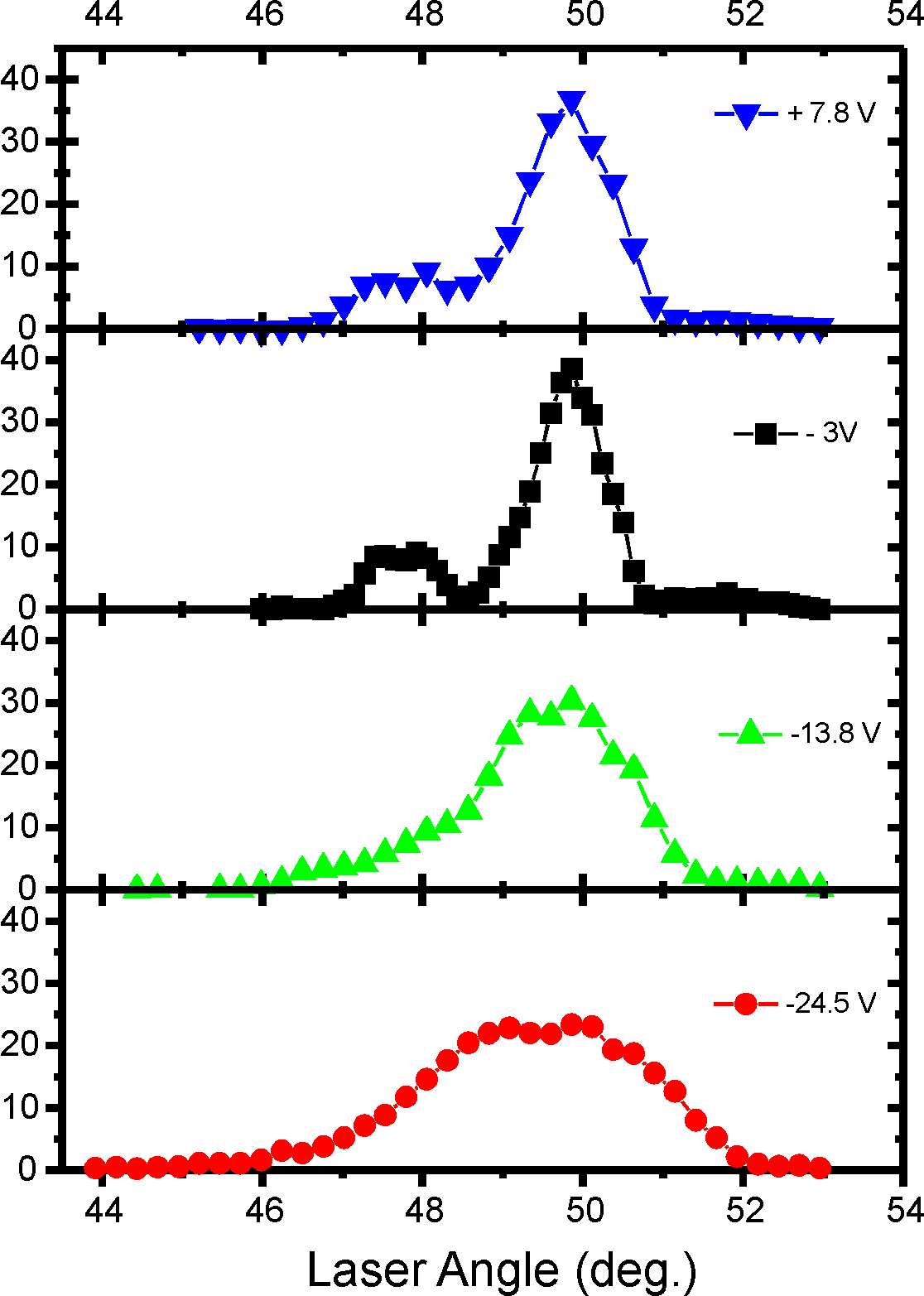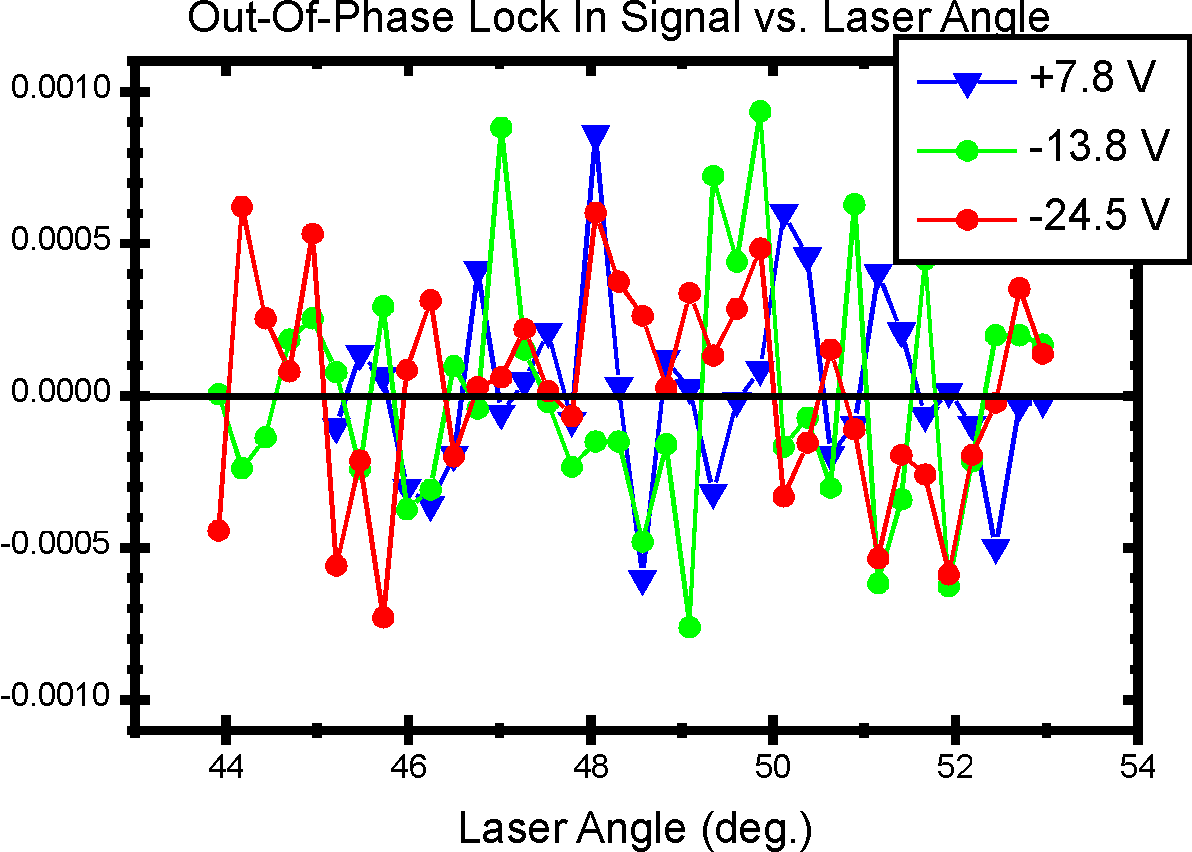
Electric Field Dependence Of the He Signals

The above graph shows the dependence of the 10-29 transition on electric fields. The beam energy was encreased to 1.235 keV so that the G peak would be visible. This is a velocity of 1/9 a.u.. The target was 8F.
Scans were taken for different voltages applied to the z stack. A resistor divider was used to keep the region of the LIR mirror near ground potential, since the mirror post was shorted to ground. The length of the stack is 43 cm. Thus, the largest field used (Vz = -24.5 V) was 1/2 V/cm.
The value of Vz= -3 V was found previously to peak the high-l signal. If this value truely produced zero field, then the Vz = +7.8 V and the Vz = -13.8 V scans would have the same width. This is clearly not the case. It is possible that the some charge accumulated in the LIR between when the tweaking was done and when the scans were taken.
Generally, the new system does not show the dramatic dependence of the signal on the average potential applied to the z stack that the previous apparatus showed to the potential applied to the LIR mirror. This is probably indicating that there are stray fields around the LIR.
Noise in the laser signals

This graph shows the lock in signals from the y (out of phase) channel. It is clear that the average value of the signal is much smaller than the variations. I can use the y channel, then, to get a value for the noise amplitude in the signal. Taking the standard deviation of the y channel for all four scans gives a noise amplitude of 0.4 mV. The size of the x-channel signal for the G peak is about 10 mV (see the previous graph for Vz= -3 V.) If the G level splits into 9 equally populated m levels in an electric field, then the signal size would be about 1.1 mV per peak. This would be marginally observable with this apparatus. Note that these noise estimates apply to measurements with 20 second integration times (the scans were taken at 20 sec. per point.) Taking several points across a peak, or integrating for a longer time will improve the signal-to-noise.